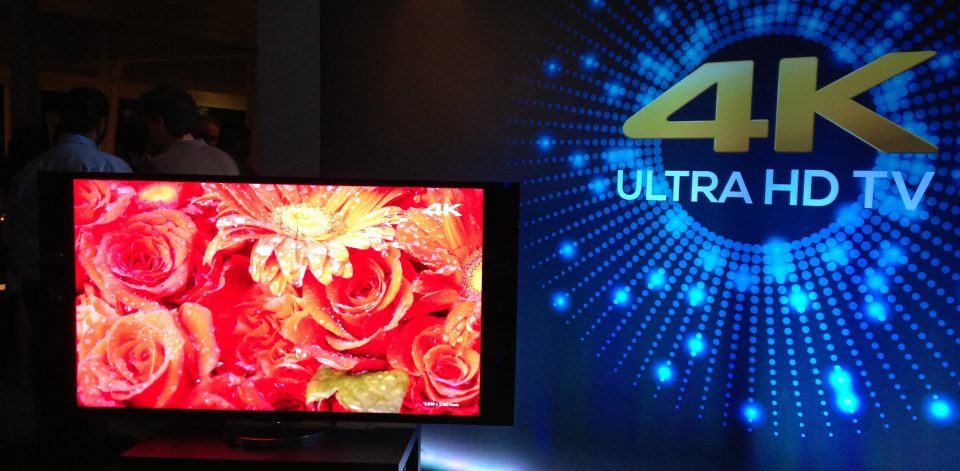
Introduction to Ultra-HD Television Technology
Overview of Ultra-HD Television
- Alternative Names: Ultra-HD television is frequently referred to by several terms such as Ultra HD, UHD, UHDTV, and 4K.
- Aspect Ratio: To qualify for the Ultra HD label, a display must maintain an aspect ratio of 16:9 or wider.
- Digital Input Requirement: An essential criterion for Ultra HD certification is to have at least one digital input capable of carrying and presenting the native video signal without dependence on upscaling or other forms of video processing.
- Sony’s Terminology: On October 23, 2012, Sony announced their intent to market their 4K products as “4K Ultra High-Definition” or “4K UHD.”
- Innovation in LCD Panels: Ortus Technology Co., Ltd made headlines on October 23, 2012, for developing the world’s smallest 4K LCD panel, measuring just 9 inches.
The Evolution of Television Resolution
- Progress from HDTV to UHDTV: The television industry has witnessed a significant resolution transformation, from High-Definition Television (HDTV) to Ultra-High-Definition Television (UHDTV).
- Introduction of 8K Resolution: In Japan, the transition stands even bolder with the introduction of 8K UHDTV, which is referred to as Super Hi-Vision, a term that previously represented HDTV in the country.
- Consumer Electronics Market Shift: Initially, consumer electronics companies introduced the term 4K in the year 2012; however, by the Consumer Electronics Show (CES) in 2013, the industry had shifted towards uniformly using the term “Ultra HD.”
In recounting this evolution, it’s clear that advancements in television resolution have been swift and impactful. The inception of Ultra-HD has not only changed the landscape of available consumer options but also set new standards for the kind of visual fidelity viewers have come to expect. With tech companies like Sony leading the charge and innovation from corporations such as Ortus Technology, the potential for even smaller and more detailed displays seems to be on the horizon. The dedication to improving digital input capabilities that ensure the accurate projection of native video signals is foundational to Ultra HD’s promise of superior visual quality. Commitment to this evolution from industry stakeholders ensures that the journey from HD to Ultra HD is not just a change in terminology but also a real step towards an enhanced viewing experience for audiences around the world.
Understanding 4K UHDTV
What is 4K Ultra HD TV?
– **Ultra HD**: Ultra-high-definition television is a visual marvel that surpasses the detail and clarity of traditional High Definition (HD) by a significant margin.
– **Alternative Names**: It’s commonly known as UHD, UHDTV, or 4K, depicting its considerably higher resolution.
– **Resolution Breakdown**: At its core, 4K UHD boasts a resolution of 3840 × 2160 pixels, quadrupling the 2.07 megapixels of full HDTV (also referred to as 1080p).
– **Pixel Count**: When it comes to pixels, 4K UHD has a whopping 8.3 million of them in a RGB stripe arrangement, offering an impeccably dense picture quality.
– **Consumer Electronics Market**: The term UHD made its appearance during CES 2013 when companies decided to adopt the term “Ultra HD” as a standard.
– **Japan’s 8K**: In the land of the rising sun, Japan is moving beyond what we know as Ultra HD with 8K resolution, referred to as Super Hi-Vision, a successor to the HDTV term once used there.
– **UHDTV-2**: This next step in the evolution of television, which is still nascent to consumer markets, offers an astonishing resolution of 7680 × 4320 pixels, totaling around 33 megapixels.
Benefits of 4K Resolution in Home Entertainment
– **Enhanced Detail & Clarity**: The sheer number of pixels in 4K UHD means that images are more detailed and sharper. Watching a movie or playing a video game on a UHD TV is an immersive experience with lucid details that standard HD simply can’t match.
– **Better for Large Screens**: With 4K, larger screens can be viewed comfortably at a closer distance without the pixel structure becoming visible, which keeps the image quality pristine and engaging.
– **Improved Color and Depth**: Thanks to the ability to have more pixels, 4K UHD TVs can produce a wider range of colors and deeper blacks, increasing the quality and realism of on-screen images.
– **Future-Proofing**: As more content is produced in 4K, investing in a UHD TV means that you’re prepared for the new standard in television broadcasting and streaming.
– **Upscaling Capabilities**: Modern 4K TVs can upscale lower-resolution content to fit the UHD format, so even if you’re watching content that isn’t native 4K, it will still look sharper than on an HDTV.
Exploring 8K UHDTV
Introduction to 8K Ultra HD TV
– **Next Generation Resolution**: 8K UHD is essentially the next significant leap in screen resolution, offering 16 times the pixels of 1080p (full HD). This provides an unprecedented level of detail and clarity.
– **8K Pixel Dimensions**: The resolution of an 8K UHD TV is 7680 x 4320 pixels, which equates to a staggering 33.2 megapixels. The sheer pixel density means that images are incredibly life-like, and screen size can further increase without losing visual fidelity.
– **Super Hi-Vision**: An alternative term for 8K UHD is Super Hi-Vision, which was coined in Japan. This term follows their previous naming convention for HDTV, showing a consistency in the evolution of television technology.
– **Availability & Content**: Although 8K TVs are available for purchase, the amount of native 8K content is currently limited. However, 8K cameras are increasingly being used for film production and big events, indicating a growing trend.
– **Upscaling to 8K**: Like 4K TVs, 8K TVs also come with upscaling technology. This allows them to increase the resolution of lower-quality content, making standard resolutions look better on an 8K screen.
The Future of 8K in the Television Market
– **Gradual Adoption**: The adoption rate of 8K TVs in the market is anticipated to be gradual. It follows a similar pattern to the early days of 4K UHD, where consumer readiness and content availability align over time.
– **Technological Developments**: The future also hinges on technological advancements that further integrate 8K into filming, broadcasting, and production workflows, as these processes will deliver more native content for viewers.
– **Demand For Larger TVs**: As consumer preference shifts toward larger television screens, the need for higher resolutions like 8K will inherently increase to maintain image clarity over larger screen areas.
– **Gaming and VR Potential**: Another domain where 8K could shine is gaming and virtual reality (VR), offering nearly lifelike experiences due to the high level of detail capable of being displayed.
– **Price Reduction Over Time**: The cost of 8K TVs is currently high, which is normal for any emerging technology. Over time, as with all electronics, prices are expected to decrease, making it more accessible to a broader audience.
– **Infrastructure and Streaming**: To truly realize the potential of 8K, infrastructure improvements are critical. This includes wider broadband capacities for streaming and advancements in HDMI and display technologies to handle the data rate and bandwidth required for 8K content.
– **Industry Standards and Broadcasting**: Finally, the integration of 8K into industry standards and the commencement of 8K broadcasting will mark a pivotal point in its market uptake, ensuring long-term relevance and presence in the consumer market.
The Impact of Aspect Ratio on Viewing Experience
The Significance of the 16:9 Aspect Ratio
– **Definition of Aspect Ratio**: Aspect ratio refers to the ratio of the width to the height of a display screen or image. The 16:9 aspect ratio, which is 1.78:1, has been internationally adopted as the standard for high-definition television.
– **Compatibility with HD Content**: This aspect ratio aligns perfectly with 1080p HD and 4K UHD content, ensuring that movies and TV shows are displayed as they were intended by the content creators without letterboxing or pillarboxing.
– **Popularity in Consumer Markets**: Over the years, the 16:9 aspect ratio has become increasingly popular in the consumer market. It is now the default aspect ratio for TVs, computer monitors, and most mobile devices, striking a balance between width and height that many find visually pleasing for a wide range of content.
– **Impact on Viewing Experience**: The 16:9 aspect ratio has significantly impacted the viewing experience. It allows for a more cinematic and immersive experience, especially when watching wide-angle shots in movies or playing video games that take advantage of the wider field of view.
How Aspect Ratio Affects Content Display and Production
– **Content Production**: Filmmakers and content producers usually select an aspect ratio that best fits their narrative and stylistic needs. Most movies and TV shows are now produced with a 16:9 aspect ratio in mind because it is the most widely supported format across modern display devices.
– **Different Aspect Ratios**: Not all content adheres to the 16:9 standard; cinematic releases are often found in wider aspect ratios such as 2.35:1 or 2.40:1, which results in black bars appearing on the top and bottom of the screen when viewed on a 16:9 TV.
– **Adapting to Various Screens**: Content providers often have to crop or adjust movies and TV shows to fit different aspect ratios, which can sometimes affect the viewing experience by excluding parts of the scene intended to be seen.
– **Advancements in Display Technology**: With advancements in display technology, some TVs and portable devices are now featuring aspect ratios other than 16:9, such as 21:9 or 18:9 (2:1), catering to specific content consumption trends such as cinematic viewing experiences or split-screen multitasking.
– **Digital Inputs and Native Signals**: To display higher resolution content, such as 4K UHD, without losing quality, modern displays feature digital inputs capable of carrying native video signals corresponding to their native resolution and aspect ratio. This ensures that viewers can experience the content as intended without the need for scaling or processing that could degrade the image quality.
High Dynamic Range (HDR) in UHD TVs
Understanding HDR Technology
When we discuss *High Dynamic Range* (**HDR**), we’re talking about a technology that has dramatically altered the landscape of television picture quality. Here’s why HDR matters:
– **Expanded Range of Colors**: HDR improves the color representation on TVs, allowing for more natural and vivid hues that more closely mirror real-world colors.
– **Greater Brightness and Darker Blacks**: HDR supports higher peak brightness levels and deeper blacks, which translates to more detail in both the brightest and darkest parts of the image.
– **Contrast Enhancement**: With HDR, the contrast between the brightest whites and the darkest blacks is more pronounced. This means that details in images that would previously be lost in shadow or washed out by light can now be seen clearly.
– **Content Creation and Output**: I’ve noticed that HDR content creation is on the rise with more movies, games, and TV shows being produced in HDR. This matches the capability of UHD TVs to output such content, significantly improving the end user’s viewing experience.
Advantages of HDR in Enhancing Picture Quality
As a user, I have reaped the benefits of HDR, which I can categorize in several ways:
– **Realistic Visuals**: The enhanced dynamic range makes the visuals on screen more realistic and lifelike. When I watch HDR content, I find that it’s not just the colors that are more vibrant, but the overall images feel more three-dimensional.
– **Improved Detail in Dark Scenes**: One of my favorite benefits of HDR is seeing the intricate details in dark movie scenes, which previously were hard to discern. Shadows and night scenes are no longer lost in a murky gray but are textured and detailed.
– **Visual Impact**: Enhanced dynamic range means that images are more engaging. Bright highlights, such as the sun or explosions, really pop on an HDR TV, grabbing my attention and making the content more immersive.
– **Universal Support**: Almost all UHD TVs now come with HDR support, meaning it’s not just an elite feature but something that’s becoming a standard. This means that the superior viewing experience is widely accessible.
– **Compatibility with Other Technologies**: HDR is complementary to other advancements in UHD TVs, including the previously discussed wider color gamuts and increased pixel density. Together, these features synergize to produce an unmatched viewing experience.
It’s not an overstatement to say that HDR technology represents a leap forward in our interactions with visual media. It enhances the UHD experience not just incrementally, but significantly, offering a level of depth and realism that was previously unattainable. As more content is produced with HDR in mind, this experience will only improve, solidifying HDR as a defining feature of modern visual technology.
Smart Features in Today’s Ultra-HD Televisions
Integration of Smart Technology in UHD TVs
– **Built-In Operating Systems**: Most Ultra-High-Definition televisions now come with their own operating systems, like Tizen on Samsung, webOS on LG, and Android TV on many Sony and TCL models. These platforms provide access to a plethora of streaming services and apps.
– **Internet Connectivity**: I can directly connect my UHD TV to the internet through Wi-Fi or an Ethernet cable. This opens up a world of content beyond traditional broadcasting, including streaming 4K content from platforms like Netflix, Amazon Prime Video, and YouTube.
– **Screen Mirroring and Casting**: Smart UHD TVs offer features such as screen mirroring or casting, allowing me to display content from my smartphone, tablet, or laptop directly onto the larger TV screen, which is ideal for sharing photos, videos, or even streaming apps.
– **App Stores for Additional Functionality**: There’s usually a dedicated app store for the TV’s operating system, where I can download a variety of applications to enhance my viewing experience, such as games, productivity tools, and even fitness apps.
– **Customization and Personalization**: The smart interface allows me to customize the home screen layout, prioritizing the apps and features I use most. Some UHD TVs can even recommend content based on my viewing history, thus personalizing my viewing experience.
The Role of AI and Voice Control in UHD TVs
– **Voice Command Functionality**: Many Ultra-HD TVs have integrated AI-powered voice assistants like Google Assistant, Amazon Alexa, or Apple’s Siri. This technology lets me control the TV and other connected smart home devices using just my voice.
– **Artificial Intelligence in Picture Quality**: AI algorithms are used in UHD TVs to upscale content to near-4K quality by analyzing and processing lower-resolution footage in real-time, thus enhancing details and reducing image noise. This ensures that even content not filmed in UHD looks better on these screens.
– **Settings Optimization**: Smart UHD TVs can automatically adjust settings such as brightness, contrast, and color based on the content being watched, the viewing environment, or my personal preferences. This is thanks to AI that can recognize different scenes or lighting conditions.
– **Personal Assistants and Ease of Access**: The integration of personal assistants into TVs has also expanded accessibility, with features such as voice-guided navigation for individuals with visual impairments or simplified controls for users with limited mobility.
– **Efficiency Improvements in AI**: AI isn’t just making the picture better; it’s also enhancing the TV’s efficiency by optimizing power consumption based on usage patterns. This can lead to a reduction in electricity bills and a lower environmental impact.
Overall, the integration of smart features in Ultra-HD televisions has transformed them from mere display devices into complex, multifunctional entertainment hubs that cater to the modern consumer’s demand for connectivity, convenience, and intelligent functionality.
The Rise of UHD Content and Streaming Services
Availability of UHD Content for Today’s Viewer
– **Increased Production of UHD Content**: The production of movies, TV shows, and even live sports in 4K resolution has significantly increased. Content creators are delivering more 4K content than ever, making full use of the superior picture quality offered by UHD technology.
– **Growth of UHD Channels**: Traditional broadcasters are also expanding their offerings, with dedicated UHD channels providing an array of content that viewers can enjoy in higher resolution. National Geographic, Netflix, and Amazon are some of the channels that I can tune into for 4K documentaries and series.
– **Expansion of UHD Blu-ray Titles**: The physical media market has adapted, too, with more UHD Blu-ray titles available for purchase. This offers me an alternative to streaming services, ensuring that I can enjoy superior picture quality without the need for an internet connection.
– **Availability of Upscaling Technology**: Even if a movie or show wasn’t originally produced in 4K, modern UHD TVs can upscale content to near-UHD quality. This means that even older favorites can look better on a UHD screen, which can breathe new life into my existing media library.
Streaming Platforms and the Adoption of UHD Streaming
– **Major Platforms Embracing UHD**: Leading streaming platforms such as Netflix, Amazon Prime Video, and Disney+ now offer vast libraries of UHD content. As a subscriber, I have the advantage of streaming shows and movies in the highest available resolution at home, directly comparable to cinematic quality.
– **Increased Access to High-Speed Internet**: The widespread availability of high-speed internet has made 4K streaming a practical choice for many households. The faster internet speeds allow me to stream UHD content without significant buffering or quality drop-off.
– **Cost-Effectiveness of UHD Services**: As the demand for UHD content has grown, the cost of subscribing to streaming services that offer UHD quality has become more affordable. Given the fact that I no longer have to purchase special equipment to play UHD media, the investment is well justified by the quality of the content I receive.
– **Enhancements in Streaming Technology**: Streaming services are continuously enhancing their technology, offering improved compression algorithms and adaptive bitrate streaming, which adjusts the video quality according to my internet speed. This ensures that I can still enjoy UHD content even if my internet connection isn’t consistently fast.
– **Support Across Devices**: The support for 4K streaming isn’t limited to UHDTVs alone; it extends to gaming consoles, set-top boxes, and even some smartphones and tablets, allowing me to enjoy UHD content on-the-go or from different devices within my home.
As an enthusiast of high-definition viewing, I find the evolution of UHD content and streaming services to be a compelling reason to invest in a UHD TV. The market has evolved to provide me with a myriad of options to enjoy crisp visuals, and this reality is what keeps the anticipation for new UHD content alive.
UHD TV Shopping Guide for the Upcoming Season
Key Factors to Consider When Buying a UHD TV
– **Resolution and Screen Size**: When I’m shopping for a UHD TV, I ensure that the model offers true 4K resolution, providing a vastly improved picture quality over the full HD TVs. I also consider the right screen size that fits my room and viewing distance.
– **High Dynamic Range (HDR) Compatibility**: I look for TVs that support HDR, which gives me a brighter picture with a greater range of colors and better contrast. HDR10 and Dolby Vision are among the most common formats I compare.
– **Refresh Rate**: Higher refresh rates like 120Hz offer smoother motion for high-action scenes in movies and sports. This is an important factor for me if I’m a fan of fast-paced content or plan to use the UHD TV for gaming.
– **Connectivity Options**: It’s essential that the UHD TV has enough HDMI and USB ports for my needs, as well as integrated Wi-Fi and Bluetooth for wireless connections with other devices. This ensures the UHD TV’s versatility in my home entertainment setup.
– **Panel Type**: The type of panel is another consideration. I explore whether the UHD TV uses LED, OLED, or QLED technology, as each has its strengths and weaknesses in terms of brightness, color reproduction, and viewing angles.
– **Smart Features**: I check for built-in smart functionality and compatible ecosystem, such as whether it’s easy for me to interface with my existing smart home products, use voice commands, or access my preferred streaming services.
– **Brand and Price**: I compare different brands, taking into account their reputation, customer service, and warranty terms. Setting a budget helps me narrow down my options while seeking the best value for my money in an Ultra-HD TV.
Comparing Top UHD TV Models on the Market
– **Samsung QLED vs. LG OLED**: In comparing the latest models, I find Samsung’s QLED screens are brighter and more durable, but LG’s OLED provides better viewing angles and true blacks. Choosing between the two often comes down to whether I prioritize picture quality or brightness and longevity.
– **Sony vs. TCL**: Sony’s models, particularly those with their proprietary processors, offer exceptional motion handling and upscaling capabilities. TCL, on the other hand, usually provides more budget-friendly options but with competitive features and Roku TV integration which suits those looking for value.
– **High-End vs. Budget Friendly**: For the best picture technology money can buy, I may look towards high-end models such as the Samsung QN900A 8K UHD TV. Yet, if I am constrained by budget, Hisense and Vizio offer 4K UHD TVs that provide solid performance without the premium cost.
– **Additional Features**: Additional features like ambient mode, space-fit sound, and anti-glare screens can also weigh into my decision. In some UHD TVs, the sound quality is as impressive as the picture, with built-in subwoofers and soundbars that rival external audio systems.
By considering these factors and making detailed comparisons, I can find the UHD TV that best fits my viewing habits, aesthetic preferences, and budget for the coming season.
Understanding the Evolving Market of UHD TVs
The Future Trends in UHD Television Technology
– **Introduction of 8K**: While I’m currently focused on 4K UHD TVs, there’s undeniable progress toward 8K resolution. Companies are starting to release 8K TVs to offer even more detail, although content availability is still limited.
– **Increase in Smart TV Capabilities**: I notice that UHD TVs are becoming increasingly smarter, with better integration with various IoT devices and more advanced voice assistant features. This makes me consider how future-proof the smart features of a TV are.
– **Growth of Gaming-Friendly Features**: As a gamer, I’m excited about UHD TVs that increasingly cater to gaming needs, offering features like variable refresh rate (VRR) and auto low latency mode (ALLM), very useful for a better gaming experience.
– **Advancements in Display Technology**: OLED technology is evolving and QLED is starting to see competition from Mini-LED and MicroLED technologies, potentially offering better brightness and energy efficiency, influencing my future purchasing decisions.
– **Enhanced Audio Quality**: UHD TVs are incorporating better sound quality options, including support for advanced audio formats like Dolby Atmos, which might reduce my need for external sound systems.
Preparing for the Next Big Leap in TV Resolution
– **Understanding 8K Content**: In preparation for the next big leap in resolution, I’m educating myself on the availability and requirements for 8K content, knowing that to fully benefit from 8K, the industry must catch up with 8K-ready content.
– **Assessing Viewing Environment**: When considering an upgrade to higher-resolution TVs, I’m gauging my room size and layout since the benefits of higher resolutions become noticeable at certain screen sizes and viewing distances.
– **Investigating Connectivity Standards**: With increased resolution comes the need for higher bandwidth connections, so I’m staying informed about the latest HDMI standards and wireless transmission technologies that will support 8K content.
– **Budgeting for Premium Devices**: I’m aware that with new technology comes a higher price tag. So, I’m planning my budget to accommodate for the higher cost of cutting-edge UHD TVs.
– **Evaluating Upcoming Models**: I’m keeping an eye on announcements for new UHD TV models, reading reviews, and comparing specs to understand which features are worth investing in for the future.
By staying on top of these emerging trends and preparing for advancements in resolution and technology, I can ensure that my future UHD TV purchase will continue to deliver exceptional value and a remarkable viewing experience.
















